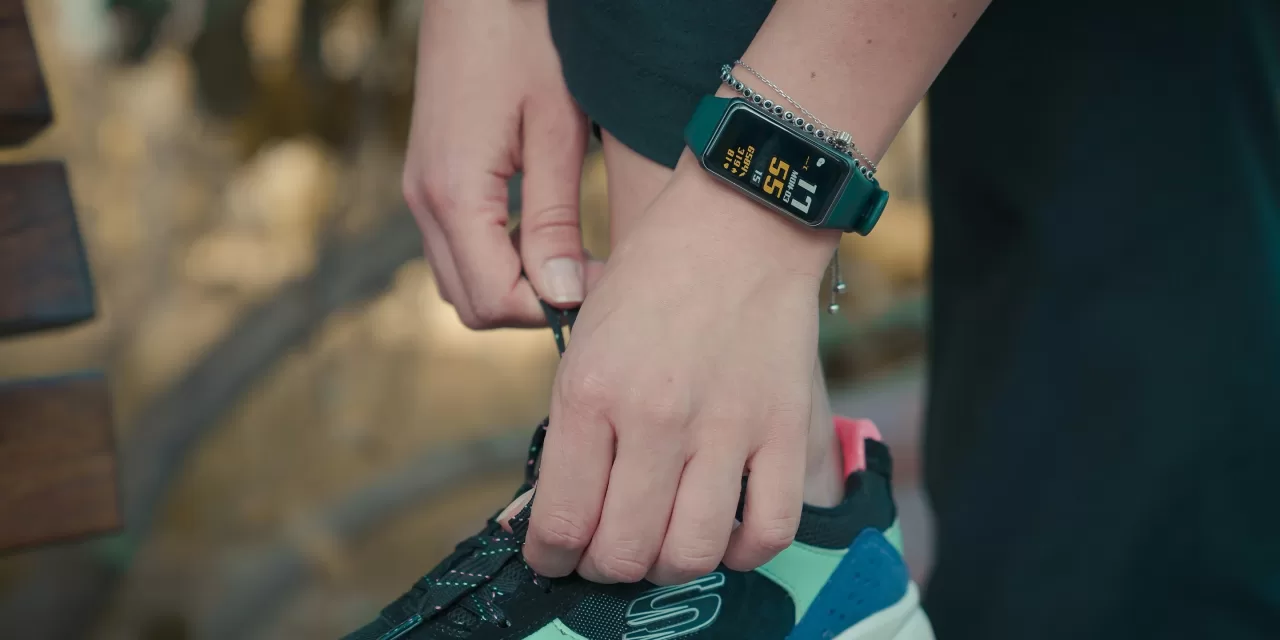For some students, remaining seated and focused at a desk from 8 a.m. to 2 p.m. can be particularly challenging, especially for those with attention deficit/hyperactivity disorder (ADHD). According to the National Institute of Mental Health, ADHD is one of the most common disorders diagnosed in children.
Despite its prevalence, ADHD lacks a universal digital diagnostic approach. However, researchers at the University of Rhode Island may have discovered a new way to diagnose the disorder using a simple, non-invasive method. Their study, Comparative Investigation of Smartwatch Data in Children with ADHD and Non-ADHD, was published in the 2024 IEEE 20th International Conference on Body Sensor Networks.
Dr. Dhaval Solanki, an engineering faculty member, and Ph.D. candidate Shehjar Sadhu propose that a wearable device, like a smartwatch, could assist in identifying symptoms of ADHD.
“We started with one industry collaborator who came up with this idea of behavioral analysis using off-the-shelf smartwatches,” said Sadhu.
The Study Design
The research team conducted a simple experiment involving children aged 6 to 11, including both those diagnosed with ADHD and those without the disorder. Participants wore smartwatches on both hands while engaging in a series of tabletop activities. The researchers closely observed behaviors such as fidgeting and movement patterns, which are common in individuals with ADHD.
“We used the data from the smartwatches in the background and monitored their movement, like whether they were tapping their fingers on the table a lot or twirling their hair,” said Sadhu.
To enhance the study, the researchers also developed a computerized puzzle activity game integrated with a computer mouse. The primary focus was on tracking mouse movements. Non-ADHD users typically dragged puzzle pieces in a straight line, whereas those with ADHD exhibited more complex and erratic movements before correctly placing the pieces.
The smartwatches played a crucial role in monitoring what happened when participants took their hands off the mouse.
“What happens if, during the study, they took their hand off the mouse and got involved in doing something else?” Solanki explained. “The mouse is not collecting that data, but the smartwatch is tracking it.”
By combining data from the smartwatch and the mouse, the researchers believe they can not only improve the accuracy of ADHD diagnoses but also assess the severity of the disorder. Another critical aspect of the study was tracking how participants responded to increasing difficulty levels in the puzzle activities.
Key Findings
The study lasted two hours, with participants given 10 minutes to complete each puzzle. Findings revealed that difficulty levels significantly impacted students with ADHD. Researchers noticed that these students became hyper-focused on tasks when they were more challenging and time-sensitive. Conversely, when tasks were too easy, they quickly lost interest and disengaged.
“If they get a very easy puzzle, they finish it and then get bored,” Sadhu noted. “We designed a game engine that keeps them interested by maintaining an optimal difficulty level, which keeps them engaged and captures more of their attention.”
Another fascinating aspect of the study involved subconscious behaviors. While participants used their dominant hands for primary tasks, the data showed their non-dominant hands often engaged in other actions, sometimes unknowingly. This insight could provide further behavioral markers for ADHD.
Future Applications
Solanki and Sadhu believe their method could offer a more accessible and effective way to identify ADHD symptoms in classroom or home settings. This could lead to further evaluations and, ultimately, a clinical diagnosis.
The research team is eager to expand their study to include high school and college-aged students.
“We want to start testing it on young adults,” said Sadhu. “For example, 18 to 22-year-olds going to college or those just out of college to help them identify and manage their own symptoms.”
Conclusion
This innovative research marks a significant step toward developing a digital diagnostic tool for ADHD. By combining smartwatch data with behavioral tracking during puzzle-solving tasks, the study highlights a promising new approach to identifying ADHD symptoms. If further validated, this method could transform the way ADHD is diagnosed and managed, offering a more objective and data-driven approach.
Disclaimer
This article is based on the study published in the 2024 IEEE 20th International Conference on Body Sensor Networks and is intended for informational purposes only. The findings should not be used as a substitute for professional medical diagnosis or treatment. Individuals concerned about ADHD should consult a qualified healthcare provider for proper evaluation and guidance.











